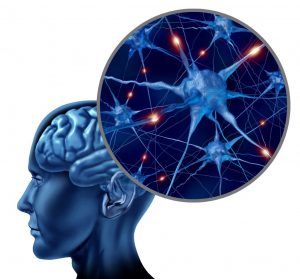Mastering Learning Series: The Brain and Stress
The Brain on Stress
Numerous scientific newsletters and journals currently spotlight “how stress affects the brain.” Citing as well the “living laboratory” conditions provided by the ongoing pandemic (and the human struggle for equality) for just-in-time continued research. The reports are not good: stress can severely damage the human brain …
However, absent is a full disclosure of “The Neuroscience Behind How the Brain Works.”
Shield of Knowledge
Fortunately for those of us following OML, thus having established a sound foundation of the precepts revealed via “Know(ing) Your Brain (blog #3),” we enter this discussion guided by a “shield of knowledge” … a knowledge that provides confidence and assurance; and lends purpose and authenticity.
Recall the most fundamental precept OML explored in blog #1:
“A key concept in scientific circles today is “plasticity” or “neuroplasticity,” the ability of the
brain to grow” … new connections … and to repair/heal itself (blog #5).
Filter the following discussion of the human brain on stress with the knowledge that the human brain miraculously holds the capacity to grow new connections and repair/heal itself for the lifetime. What each of us must provide is a commitment to self-knowing, taking responsibility for ourselves and helping others, and actively engaging our brains in positive daily activities.
Brain Disruptors
Stress is, in fact, your brain’s most destructive disruptor. Chronic stress can actually change the physiology, the functions, activities and processes, of the brain … and the body! Stress causes chemical and electrical imbalances in the brain that, in turn, impair the body both physically and mentally. Not only is decision making, planning and learning disrupted, physical manifestations surface. Tension headaches, migraines, increased blood pressure, diabetes … even anti-social behavior, mood swings, sleep and eating disruptions and impaired long-term memory arise.
The human brain was not constructed to meet deadlines, design creative solutions or juggle daily activities of a “stay-at-home” family in the midst of responding to an extended pandemic. Life’s unexpected disruptions, fears and illnesses all challenge the brain, sending it into a maelstrom of chemical and electrical charges. Instead of engaging the prefrontal, higher order thinking brain, this ongoing global pandemic may leave your brain scrambled … while hope of productivity wans.
Good Stress
A little stress is good … it motivates, challenges … and the brain thrives, memory peaks. However, our current state of world affairs presents a very different internal scenario.
Chronic Stress
Chronic (prolonged) stress literally shrinks the brain … reducing volume in an area of the brain responsible for self-control … making handling future stress more difficult because it diminishes the brain’s ability to take control of the situation, manage the stress, and keep events from getting out of control.
Children On Stress
Children are most susceptible to the fallout from chronic stress so be especially mindful and watch for tiredness, mood swings, loss of appetite, and attitude and attention changes. The child’s brain has not developed, as yet, the capacity to protect itself thus depends on you, the parent and adult, to guide… to literally talk them through crisis. Without your verbal dialogue and explanation, children “read” adult reactions and interactions, assigning feels according to how adults act … generating underlying fears, guilt, sense of harm … that become stored in the child’s brain to interfere with their learning. That is how the child’s brain operates until it matures enough to form knowledgeable opinions and decisions on its own.
Adults help children learn to cope with stress by simply stating that we are stressed … and need some quite time … or need a walk … Give yourself the break you need … at the same time model for children how to deal with stress. It’s a valuable lesson for all.
Recovery System
While stress can negatively affect the brain, plasticity … that miraculous capacity of the brain to grow neurons for the lifetime … can mend damaged pathways between the hippocampus and the amygdala caused by stress. Recovery from brain damage occurs more readily within the younger, malleable brain; reversibility in older adults may require building new neural pathways, a relearning process.
By far, the best alternative for dealing with stress is to develop healthy interventions of daily exercise, periodic breaks in the daily work schedule, drinking water to flush the system, enjoyable moments with the family (and pets), reducing sugar and carbs in the diet, regular meal schedules, and each day find beauty … in a smile … in nature … in laughter … in music … in the indomitable spirit of the human being to survive, create and contribute.
Brain Exercise # 6
 Google: schematic diagram of the human brain Review several brain models to locate the hippocampus, where memory is stored and processed; the amygdala, center for emotional processing; and the prefrontal cortex, the thinking center. These areas are most profoundly affected by stress.
Google: schematic diagram of the human brain Review several brain models to locate the hippocampus, where memory is stored and processed; the amygdala, center for emotional processing; and the prefrontal cortex, the thinking center. These areas are most profoundly affected by stress.
About the Author
Mentored by Malcolm Knowles (long considered the “father of adult education” in America), Dr. Alice F. Dyer has devoted her professional career to a brain-based approach to human development via teaching and training. She founded Corporate College Services in 1997. For more than 20 years, CCS has championed accelerated learning in the workplace.
